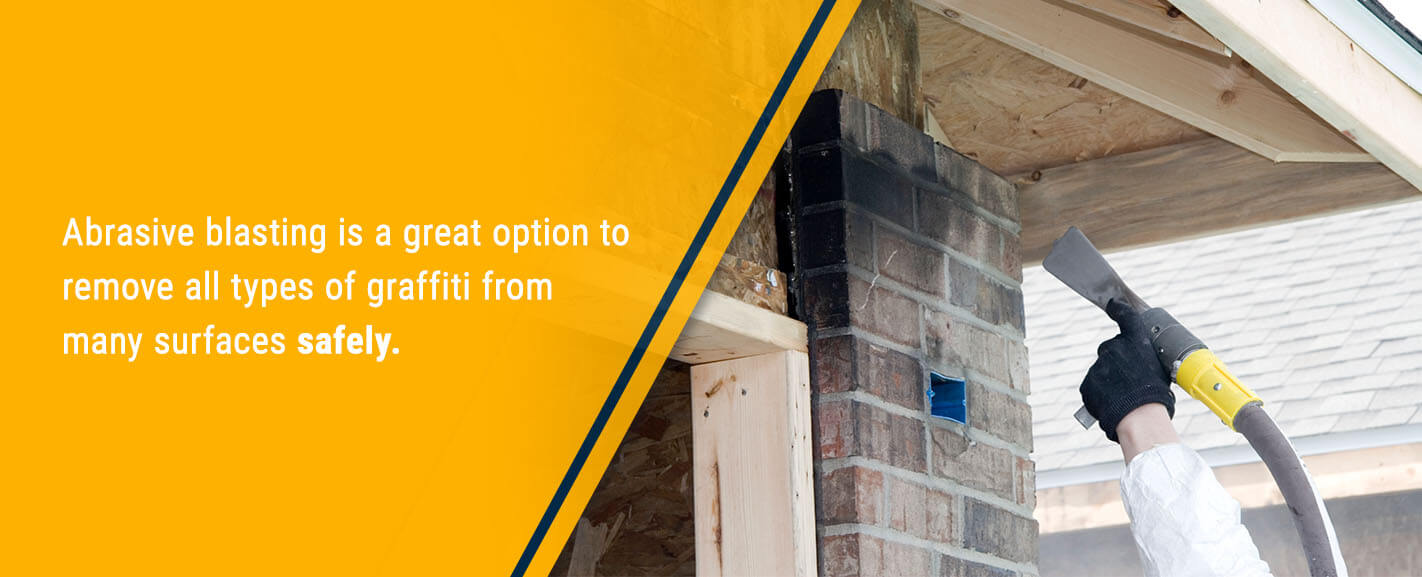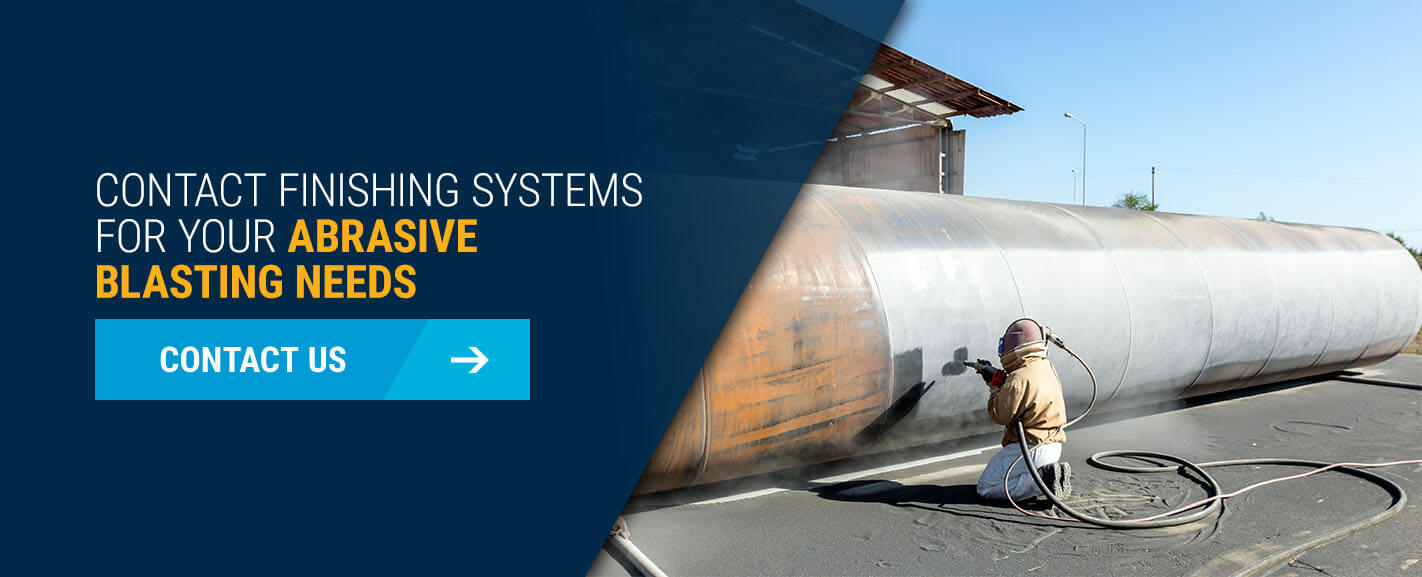If you’re a business owner, it’s imperative that you deal with vandalism and graffiti promptly. Removing graffiti might seem like a challenging feat. However, abrasive blasting is an easy and effective graffiti removal solution for various surfaces.
Abrasive blasting refers to the use of a highly pressurized stream of abrasive material to clean a surface. Although people frequently use the terms “abrasive blasting” and “sandblasting” interchangeably, sandblasting uses many more materials than abrasive blasting. Dry sandblasting can emit silica and other abrasive materials, causing environmental harm. Instead, abrasive blasting methods use glass beads, plastics, and even biodegradable media blasting to remove graffiti from your property.
If you’re a business owner experiencing vandalism like graffiti, taking action is a priority. You’ve built your company’s brand and tailored your property to reflect your message. Graffiti impacts your property and your business’s image, potentially leading to a loss of loyal customers. Graffiti that includes offensive or obscene symbols can significantly harm your business’s reputation and turn customers away.
In the U.S., the costs associated with repairing graffiti damage range between $15 to $18 billion. Graffiti can be challenging to remove in cold weather. Still, when graffiti goes unchecked, it can also encourage other forms of vandalism and send a concerning message to customers and competitors. Therefore, it’s essential to clean graffiti within 24 to 48 hours to discourage further vandalism.
There are several types of graffiti, including:
Regardless of the type of graffiti you see, you should properly remove all signs of vandalism to protect your company’s image.
If you’re struggling with graffiti, you’ll have to determine the best removal methods for your needs. Making that choice requires knowing how to remove graffiti from stone, concrete, brick or painted metal walls. Each surface has slightly different qualities, so you’ll need to evaluate what type of graffiti removal is best for your needs.
While some jobs may be more involved and require finishing, such as graffiti that involves scratching, other jobs like those involving paint or markers may be a more straightforward fix. Consider multiple factors when choosing the type of graffiti removal for your needs, including:

Abrasive blasting is a great option to remove all types of graffiti from many surfaces safely. In fact, graffiti removal is one of the most common reasons property owners use abrasive blasting.
The abrasive blasting process follows these steps:
You’ll want to choose different graffiti removal methods depending on whether you want to remove graffiti from stone, brick, concrete, or painted metal. Abrasive shapes range from angular media for heavy-duty jobs to round media for cleaning jobs. While angular abrasives may cut into the surface of a more delicate material you’re cleaning, round abrasives won’t damage the surface.
Natural stone is a softer material than you might assume. As a result, you may want to remove graffiti from stone with natural abrasives like walnut shells and corn cobs. While corn cobs are some of the softest abrasives, walnut shells are slightly harder for more durable stone material.
Despite its rugged appearance, you can easily damage brick with the wrong abrasive blasting material. Softer, natural walnut shells and corn cobs are gentler methods to remove graffiti from brick. For more aggressive jobs, try fine glass bead abrasives. Because brick already has a rough profile, the beads won’t damage the surface’s appearance.
You can use glass beads or more aggressive aluminum oxide abrasive blasting to clean graffiti from concrete because it is a harder material than stone or brick. Concrete is durable enough to withstand aluminum oxide, which is harder and more abrasive. Black Beauty® abrasives are also an excellent choice for removing graffiti from concrete. They come in three options: medium, fine and extra fine.
Removing graffiti from painted metal depends on the metal’s hardness. Plastic abrasive blasting is a great way to clean softer metals and is commonly used in the automotive industry to remove paint because it doesn’t damage the surface of the metals.
Walnut shell and corn cob abrasives are also excellent ways to remove graffiti from softer metals. For materials like aluminum and stainless steel, try medium-sized glass beads. These glass beads effectively remove paint and leave a smooth, shiny finish in its place.

If you see graffiti on your business, take action by contacting Finishing Systems. Our experienced team has provided blasting, stripping, finishing, manufacturing, assembly, distribution and warehouse services for nearly 40 years. Contact Finishing Systems today to learn more about our products and services!